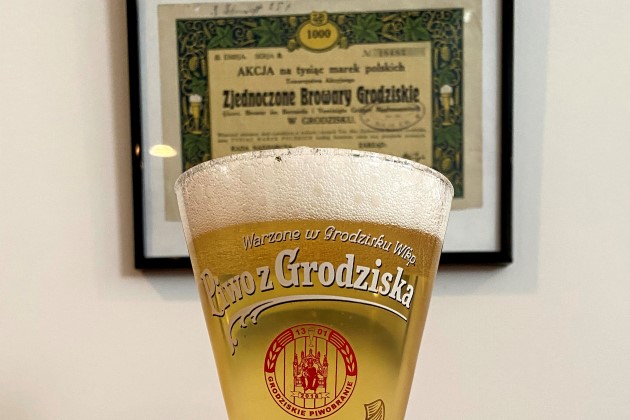
“Smoke taint,” an undesirable result of fires in grape growing regions that has plagued winemakers for years, came to hops in 2020. I wrote about the topic for All Access subscribers to the Brewing Industry Guide and will report more in Hop Queries next week.
Most important, this is bad news for farmers affected because it reduces the value of some of their crop. But brewers should be aware that tainted hops could make their way into the supply chain. As one grower told me, “Here’s hoping we don’t see a rush of rauchbier’s coming into the market.” Unlike many people, I like rauchbiers, but I’m not looking forward to being surprised by a juicy IPA that tastes like licking an ash tray. (“Licking an ashtray” being a phrase used to describe wines made with smoke-tainted grapes.)
There is a time, however, that smoke and hops belong together. So returning to one of my favorite topics, I’ve recently tasted two very excellent smoked wheat beers, a style that through the years has been known both as Grodziskie and Grätzer. (A bit of disclosure, the breweries involved shipped me these beers.)
The photo at the top is Chuckanut Grodziskie, poured into a glass Browar Grodzisk had made when they opened on the site of a former brewery in Grodzisk in 2016. That’s a stock certificate for United Grodzisk Breweries, the lone brewery in Grodzisk for most of the 20th century. Welcome to the full 21st Century Grodziskie Experience.

Brewers have been making beer in Grodzisk (known as Grätz during Prussian and German occupation) for more than 500 years. Malting was as important as brewing, and former malthouses are easier to spot today than the restored old brewery. “You can smell the history,” a Polish brewer told me as we walked along cobblestone streets in 2014.
Beers change over the course of 500 years, so let’s forgo any discussion about what the “most authentic” version of Grodziskie might be. The givens are that it is made with smoked wheat malt and it is low alcohol. Sometimes it was hoppy, and sometimes it included barley.
“If somebody says it is like 100 years ago it is not so,” says Krzysztof Panek, one of the partners who operate Browar Grodzisk. “It cannot be true.” The version from Grodzisk is not quite as hoppy as one from Live Oak Brewing in Texas and a bit drier, but they are cut from the same cloth. They are about smoke and hops.
But that smoke, that’s important. Oak smoked wheat malt does not smell like beechwood smoked malt or English peated malt. “The (Schlenkerla) Rauchbier Märzen is too much for me, too much tobacco,” says Rick Burns, lead brewer at Chuckanut. “(Oak) is a better smoke flavor, so much more subtle.”
I tasted the second iteration of Chuckanut Grodziskie (and it will be a while before there is a third; just a fact of life for smoked beers). They changed the process a bit when making the wort and also they way it is fermented, kräusening it the second time around — not to make it more authentic, but to make it better. It is smoky, it is dry, it is effervescent, and it is hoppy (with IBUs in the low 30s).
When Porch Drinking asked me to choose four of my favorite beers from 2020 to bring to a dream bottle share I chose this one. A 3.1% beer? It can hold its own with 13% imperial stouts. More important, it is true to the brewery from which it came.
“We are known for making German style beers (they won three more medals at GABF 2020,” Burns says. “This looks and tastes like a Chuckanut beer.”
Seedstock Gratzer captured a silver medal at GABF 2020 in the historical beer category, appropriate because Seedstock specializes in historical beers. (And, my goodness, Fr. Bernard’s Grodziskie from New Magnolia Brewing in Houston won a bronze. Chuckanut did not enter the category.)
Seedstock serves Gratzer highly carbonated in its Denver taproom, but during the trip to Atlanta in a growler (perhaps somewhere over Mountain Grove, Missouri) it lost its effervescence. However, it poured bright and with bubbles would totally pass for “Polish Champagne.”
It is a touch fruitier than Chuckanut’s and not quite as dry, but most definitely smoky and hoppy, floral and spicy with 32 IBU. And it has a silver medal for being historical.
I am a million miles away from being a Scottish chauvinist, but … “English peated malt”?
My apologies. (Blushes)